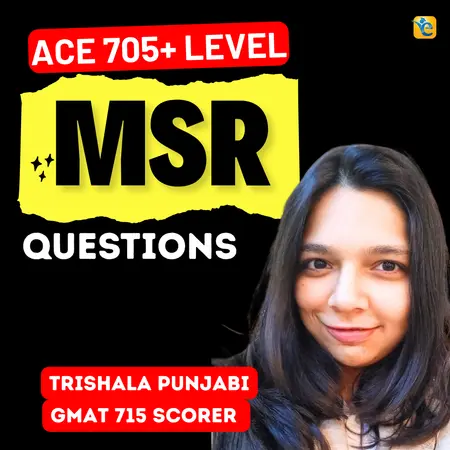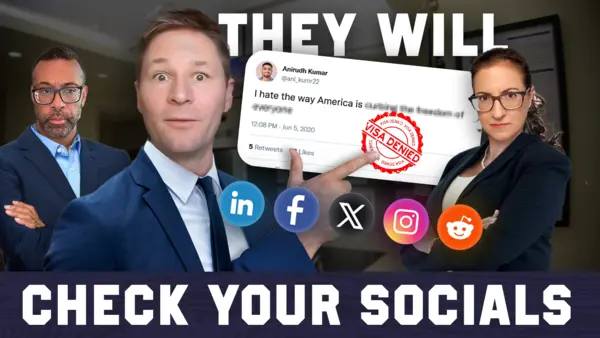Events & Promotions
|
|

GMAT Club Daily Prep
Thank you for using the timer - this advanced tool can estimate your performance and suggest more practice questions. We have subscribed you to Daily Prep Questions via email.
Customized
for You
Track
Your Progress
Practice
Pays
Not interested in getting valuable practice questions and articles delivered to your email? No problem, unsubscribe here.
- Nov 18
11:00 AM PST
-12:00 PM PST
Join us in a live GMAT practice session and solve 30 challenging GMAT questions with other test takers in timed conditions, covering GMAT Quant, Data Sufficiency, Data Insights, Reading Comprehension, and Critical Reasoning questions. - Nov 22
11:00 AM IST
-01:00 PM IST
Do RC/MSR passages scare you? e-GMAT is conducting a masterclass to help you learn – Learn effective reading strategies Tackle difficult RC & MSR with confidence Excel in timed test environment - Nov 23
11:00 AM IST
-01:00 PM IST
Attend this free GMAT Algebra Webinar and learn how to master the most challenging Inequalities and Absolute Value problems with ease. - Nov 25
10:00 AM EST
-11:00 AM EST
Prefer video-based learning? The Target Test Prep OnDemand course is a one-of-a-kind video masterclass featuring 400 hours of lecture-style teaching by Scott Woodbury-Stewart, founder of Target Test Prep and one of the most accomplished GMAT instructors.
Kudos
Bookmarks
D
Be sure to select an answer first to save it in the Error Log before revealing the correct answer (OA)!
Difficulty:
 75%
(hard)
75%
(hard)
Question Stats:
57% (02:14) correct 43%
(02:32)
wrong
43%
(02:32)
wrong  based on 1027
sessions
based on 1027
sessions
History
Date
Time
Result
Not Attempted Yet
Trade protection is bad policy. Take the case of the microcomputer industry. The United States government attempted to restore the computer chip market to United States manufacturers, who had ceased production in the face of an abundant supply of cheap chips from foreign manufacturers. Under trade protection, it was expected that, as government-imposed quotas and excise taxes forced the price of foreign chips to rise, United States manufactures would reenter the market. They did, but at only slightly lower prices than the now-high prices of foreign firms. The lesson has been simple: trade protection means that United States manufactures gain while United States consumers lose.
Which one of the following is an assumption on which the author’s argument relies?
(A) It is unreasonable to expect that government-imposed quotas and excise taxes will reduce prices for United States consumers.
(B) United States manufacturers of computer chips are more concerned with high profits that are foreign manufacturers.
(C) The United States government’s primary purpose in trade protection is to restore markets and profits to United States manufacturers.
(D) With respect to trade protection, the microcomputer industry is representative of United States industry in general.
(E) The quality of the chips produced by United States manufacturers is better than the quality of the chips produced by foreign manufacturers.
Which one of the following is an assumption on which the author’s argument relies?
(A) It is unreasonable to expect that government-imposed quotas and excise taxes will reduce prices for United States consumers.
(B) United States manufacturers of computer chips are more concerned with high profits that are foreign manufacturers.
(C) The United States government’s primary purpose in trade protection is to restore markets and profits to United States manufacturers.
(D) With respect to trade protection, the microcomputer industry is representative of United States industry in general.
(E) The quality of the chips produced by United States manufacturers is better than the quality of the chips produced by foreign manufacturers.
Originally posted by GmatKnightTutor on 14 Mar 2020, 19:25.
Last edited by GmatKnightTutor on 14 Dec 2022, 22:12, edited 1 time in total.
Last edited by GmatKnightTutor on 14 Dec 2022, 22:12, edited 1 time in total.
Kudos
Bookmarks
No worries, people, let’s knock this one out. Many people got this right and, I daresay, this is one of those passages you read through for gist rather than detail.
Trade protection is bad policy. Take the case of the microcomputer industry. The United States government attempted to restore the computer chip market to United States manufacturers, who had ceased production in the face of an abundant supply of cheap chips from foreign manufacturers. Under trade protection, it was expected that, as government-imposed quotas and excise taxes forced the price of foreign chips to rise, United States manufactures would reenter the market. They did, but at only slightly lower prices than the now-high prices of foreign firms. The lesson has been simple: trade protection means that United States manufactures gain while United States consumers lose.
Which one of the following is an assumption on which the author’s argument relies?
(A) It is unreasonable to expect that government-imposed quotas and excise taxes will reduce prices for United States consumers.
First off, is this even an ASSUMPTION by definition? Second, clearly this doesn’t seem to relate to the thrust of the author’s argument, which is based off a domino-effect analogy of what happens if trade protection occurs. Yellow flag.
(B) United States manufacturers of computer chips are more concerned with high profits that are foreign manufacturers.
This is the true yet irrelevant choice. This doesn’t relate to the author’s argument. We need an assumption upon which the argument relies. Why is trade protection bad policy? Because US manufactures are more concerned with high profits? Yellow flag.
(C) The United States government’s primary purpose in trade protection is to restore markets and profits to United States manufacturers.
This one was a little tempting. It ‘felt’ like a right answer choice. But it isn’t, since the third line of the passage is meant as an illustration for why trade protection is bad — not a reason for enacting trade protection policy itself. I’m seeing this on a later read, but when I initially went through the answer choices this was my top yellow flag, I think. I didn't go so deep into WHY it may be wrong.
(D) With respect to trade protection, the microcomputer industry is representative of United States industry in general.
Yes, this feels good. The argument uses an illustration to convey its merit. The argument uses the microcomputer industry for this illustration. If I tried to convince you that all birds can fly using the example of a crow, the assumption is that, at the very least, crows represent all birds in that respect. Is that an Ostrich?! For the argument to work the microcomputer has to represent industries as a whole.
(E) The quality of the chips produced by United States manufacturers is better than the quality of the chips produced by foreign manufacturers.
Irrelevant. Let’s just leave it at that. I daresay this might be the answer choice for those who begin to create stories for it to work.
GmatKnight dot com - Tutoring and free quick tips
Trade protection is bad policy. Take the case of the microcomputer industry. The United States government attempted to restore the computer chip market to United States manufacturers, who had ceased production in the face of an abundant supply of cheap chips from foreign manufacturers. Under trade protection, it was expected that, as government-imposed quotas and excise taxes forced the price of foreign chips to rise, United States manufactures would reenter the market. They did, but at only slightly lower prices than the now-high prices of foreign firms. The lesson has been simple: trade protection means that United States manufactures gain while United States consumers lose.
Which one of the following is an assumption on which the author’s argument relies?
(A) It is unreasonable to expect that government-imposed quotas and excise taxes will reduce prices for United States consumers.
First off, is this even an ASSUMPTION by definition? Second, clearly this doesn’t seem to relate to the thrust of the author’s argument, which is based off a domino-effect analogy of what happens if trade protection occurs. Yellow flag.
(B) United States manufacturers of computer chips are more concerned with high profits that are foreign manufacturers.
This is the true yet irrelevant choice. This doesn’t relate to the author’s argument. We need an assumption upon which the argument relies. Why is trade protection bad policy? Because US manufactures are more concerned with high profits? Yellow flag.
(C) The United States government’s primary purpose in trade protection is to restore markets and profits to United States manufacturers.
This one was a little tempting. It ‘felt’ like a right answer choice. But it isn’t, since the third line of the passage is meant as an illustration for why trade protection is bad — not a reason for enacting trade protection policy itself. I’m seeing this on a later read, but when I initially went through the answer choices this was my top yellow flag, I think. I didn't go so deep into WHY it may be wrong.
(D) With respect to trade protection, the microcomputer industry is representative of United States industry in general.
Yes, this feels good. The argument uses an illustration to convey its merit. The argument uses the microcomputer industry for this illustration. If I tried to convince you that all birds can fly using the example of a crow, the assumption is that, at the very least, crows represent all birds in that respect. Is that an Ostrich?! For the argument to work the microcomputer has to represent industries as a whole.
(E) The quality of the chips produced by United States manufacturers is better than the quality of the chips produced by foreign manufacturers.
Irrelevant. Let’s just leave it at that. I daresay this might be the answer choice for those who begin to create stories for it to work.
GmatKnight dot com - Tutoring and free quick tips
General Discussion
Kudos
Bookmarks
To identify the assumption underlying the author's argument that "trade protection is bad policy," as demonstrated by the case of the microcomputer industry, we need to assess which unstated belief is essential for the argument's validity. The argument specifically mentions that trade protection led to higher prices for U.S. consumers and only slightly lower prices from U.S. manufacturers compared to the elevated prices of foreign chips due to tariffs and quotas.
Let's analyze each option:
(A) It is unreasonable to expect that government-imposed quotas and excise taxes will reduce prices for United States consumers.
Let's analyze each option:
(A) It is unreasonable to expect that government-imposed quotas and excise taxes will reduce prices for United States consumers.
- This option seems closely aligned with the argument's reasoning. The author claims that trade protection led to increased prices, implying it is unreasonable to expect such measures to reduce prices for consumers. This assumption is critical because if it were not true (i.e., if it were reasonable to expect price reductions), the argument's conclusion would be undermined.
- This statement about profit motives could be relevant but isn't necessary for the argument to hold. The argument centers on the effects of trade policies on prices and market behavior, not directly on the profit motives of U.S. manufacturers.
- While this might be a possible motivation for trade protection, the argument does not necessarily rely on this being the government's primary purpose. The argument's conclusion about the policy's effectiveness does not hinge on understanding the government's intentions.
- This is a critical generalization assumption. The argument uses the microcomputer industry as a case study to draw a broader conclusion about trade protection as a policy. If this industry is not representative, then the conclusion might not apply universally across other industries.
- The quality of the chips is not discussed as a factor in the argument. The focus is on price and market access, not quality, making this assumption irrelevant to the argument's logic.
Bunuel











